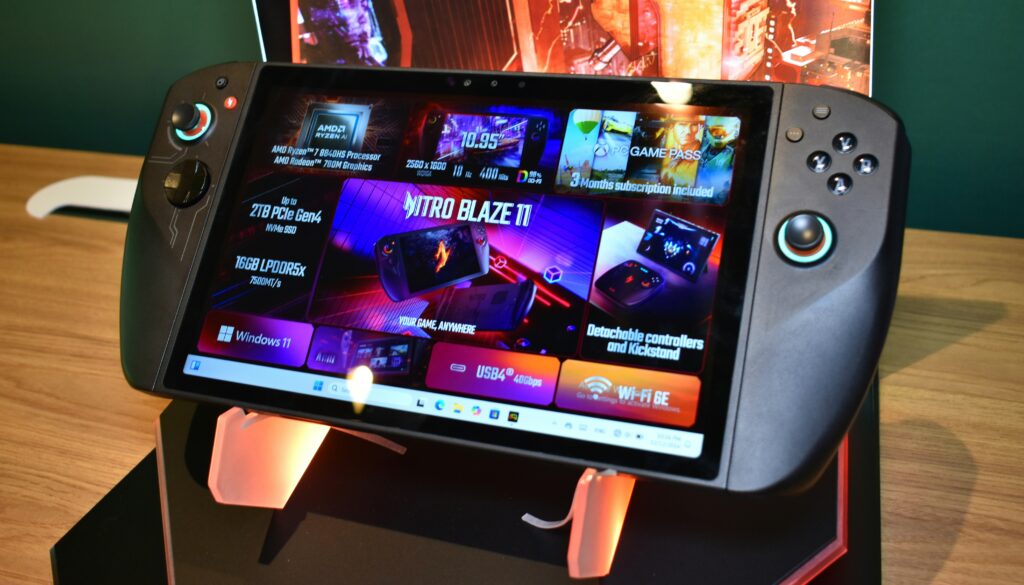As a passionate gamer, I’ve witnessed the evolution of consoles over the years, but nothing quite compares to the potential impact of cloud gaming on the future of gaming consoles. The concept of streaming games directly to your device, without the need for expensive hardware upgrades, is reshaping the gaming landscape. Cloud gaming offers a glimpse into a future where gamers can access a vast library of titles instantly, revolutionizing how we play and interact with games.
In this article, I’ll delve into the role of cloud gaming in shaping the future of consoles, exploring the benefits, challenges, and implications for the gaming industry. From improved accessibility to changing business models, cloud gaming is poised to redefine the way we experience gaming. Join me as we unravel the exciting possibilities that cloud gaming brings to the forefront of the gaming world.
Understanding Cloud Gaming
I’d like to delve into the intricacies of cloud gaming and how it is shaping the future of gaming consoles. Let’s explore what cloud gaming is and the key technologies that drive this innovative gaming experience.
What Is Cloud Gaming?
Cloud gaming is a service that allows gamers to stream video games over the internet without the need for downloading or installing them on their devices. Instead of relying on local hardware to run games, cloud gaming utilizes remote servers to process and render game data, which is then streamed to the player’s device in real-time. This technology enables gamers to play high-quality games on various devices, from smartphones to PCs, without requiring expensive hardware upgrades.
Key Technologies Powering Cloud Gaming
The backbone of cloud gaming consists of cutting-edge technologies that ensure a seamless gaming experience for players. Here are some key technologies driving cloud gaming forward:
- Cloud Servers: These powerful servers host the game software and handle the processing and rendering of game data, allowing players to access and play games remotely.
- Data Centers: Geographically dispersed data centers store game libraries and ensure low-latency connections for smooth gameplay by minimizing the distance data travels between servers and players.
- Streaming Technology: Advanced streaming technology compresses and transmits game data over the internet, delivering high-quality graphics and responsive gameplay to players in real-time.
- Edge Computing: Edge computing brings processing power closer to players, reducing latency by processing data closer to the gaming device, enhancing the overall gaming experience.
- 5G Networks: The high-speed and low-latency capabilities of 5G networks facilitate lag-free cloud gaming experiences, enabling players to enjoy high-fidelity gaming on the go.
By leveraging these innovative technologies, cloud gaming is revolutionizing the gaming industry by offering flexibility, accessibility, and scalability to gamers worldwide.
The Current State of Cloud Gaming Market

The current landscape of cloud gaming is witnessing rapid transformation with major players and platforms driving innovation and reshaping the gaming industry. User adoption and market trends are key indicators of the substantial growth and evolution within the realm of cloud gaming.
Major Players and Platforms
In the realm of cloud gaming, key industry players such as Google Stadia, Microsoft xCloud, NVIDIA GeForce Now, and PlayStation Now are revolutionizing how gamers access and play their favorite titles. These platforms offer diverse libraries of games and leverage cloud technology to provide seamless gaming experiences across different devices.
User Adoption and Market Trends
User adoption of cloud gaming services is steadily increasing as more gamers recognize the convenience and flexibility offered by streaming games without the constraints of local hardware. Market trends indicate a shift towards subscription-based models, where players can access a vast array of games for a fixed monthly fee, enhancing accessibility and affordability in the gaming ecosystem.
Impact of Cloud Gaming on Console Gaming
Cloud gaming is reshaping the landscape of console gaming, altering how players access and enjoy their favorite titles.
Shifts in Consumer Preferences
Consumers are gravitating towards the convenience and flexibility offered by cloud gaming services. With the ability to stream games without the limitations of physical hardware, players can engage in their gaming experiences across various devices seamlessly. This shift indicates a growing preference for accessibility and on-demand gaming content without the need for traditional consoles.
Potential Impact on Console Sales
The rise of cloud gaming platforms poses a potential challenge to traditional console sales. As more players embrace cloud-based gaming solutions, the demand for dedicated gaming consoles may face a decline. However, consoles are not becoming obsolete but are likely to evolve to complement cloud gaming services, offering a diverse range of gaming experiences to cater to different consumer preferences.
Future Prospects of Cloud Gaming
As I delve into the future prospects of cloud gaming, let’s explore the latest innovations and enhancements in technology shaping the gaming landscape and predictions for seamless cloud gaming and console integration.
Innovations and Enhancements in Technology
Innovations and enhancements in cloud gaming technology continue to redefine the gaming experience. The integration of advanced technologies like edge computing and 5G networks ensures lower latency, high-speed data transfer, and improved gaming performance. This technological leap enables gamers to enjoy a smoother and more responsive gameplay experience, blurring the lines between physical hardware constraints and cloud-based gaming platforms.
Predictions for Cloud Gaming and Console Integration
The future of cloud gaming and console integration looks promising as technology evolves. Predictions suggest a harmonious coexistence, where traditional consoles adapt to complement cloud gaming services rather than compete. Consoles are anticipated to offer diverse gaming experiences, catering to varying preferences of gamers, from casual players to hardcore enthusiasts. The integration of cloud services with consoles will provide a hybrid gaming ecosystem, offering the best of both worlds – the convenience of cloud gaming and the immersive experience of traditional console gaming. This fusion is expected to enhance accessibility and choice for gamers, ushering in a new era of gaming innovation.



